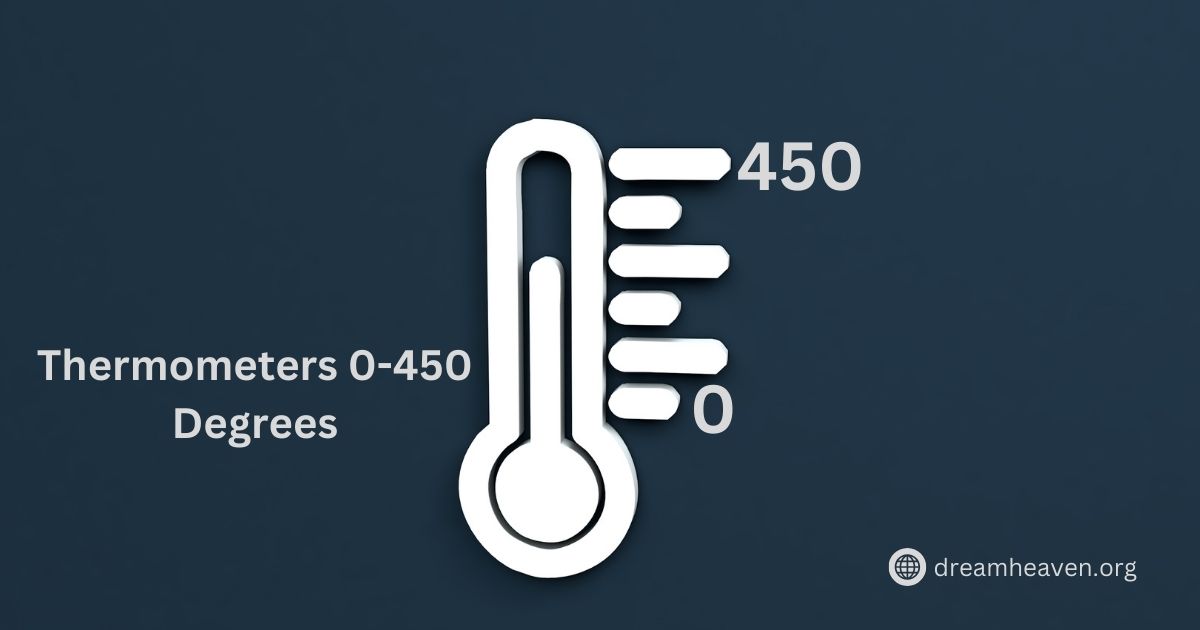Thermometers with a 0-450 degrees range are indispensable tools in various fields, from culinary arts to industrial processes. Their versatility allows them to handle tasks that require temperature readings from freezing points to extreme heat levels. This article explores their applications, types, features, and maintenance to help you make an informed choice.
Why a 0-450 Degrees Thermometer is Essential
The wide temperature range makes this thermometer suitable for diverse purposes. It can measure low temperatures, such as room or cold storage conditions, and high temperatures, like those in ovens, grills, or industrial equipment. This adaptability saves users the hassle of switching between multiple thermometers.
Common Applications of High-Range Thermometers
Cooking and Baking
In kitchens, these thermometers ensure accurate temperature readings for dishes that demand precision. Chefs use them to monitor oven temperatures, check the doneness of meat, and measure liquids like oils or caramel that require specific heat levels.
Grilling and Smoking
For outdoor cooking enthusiasts, a thermometer is a vital tool to ensure meats are cooked evenly. Whether you are grilling steaks or smoking ribs, maintaining the right temperature is crucial for both taste and safety.
Industrial Use
Industries such as metalworking, ceramics, and manufacturing rely on these thermometers for heat-intensive operations. They measure the temperature of molten metals, kiln environments, or machinery to prevent overheating and ensure product quality.
Laboratory and Scientific Experiments
In scientific settings, maintaining controlled temperatures is key to accuracy. These thermometers help researchers monitor chemical reactions, sterilize equipment, and study materials under varying heat levels.
Types of Thermometers with a 0-450 Degrees Range
Digital Thermometers
Digital thermometers are known for their speed and precision. They provide instant readings, often with a backlit display for easy visibility in low light. Some models feature alarms or timers to alert users when a target temperature is reached.
Analog Dial Thermometers
Traditional analog thermometers have a simple design with a rotating dial that indicates the temperature. They are durable and commonly used in ovens or grills but require manual calibration for accuracy.
Infrared Thermometers
Infrared thermometers offer non-contact temperature readings, making them ideal for measuring surface heat. These are popular in industrial settings where direct contact with the object could be unsafe.
Probe Thermometers
Equipped with a long metal probe, these thermometers are designed to measure the internal temperature of food, liquids, or deep surfaces. Their precise readings make them a favorite for culinary and laboratory applications.
Key Features to Look For
Temperature Accuracy
Accurate readings are critical, especially in cooking and scientific experiments. Choose a thermometer with a low margin of error to ensure reliable results.
Durability and Build Quality
High temperatures can damage inferior materials. Look for thermometers built with heat-resistant plastics or metals to withstand prolonged exposure to extreme heat.
Ease of Use
A user-friendly interface with clear displays and intuitive controls enhances the experience. Features like quick response times and straightforward calibration add to the convenience.
Versatility
Some thermometers come with interchangeable probes or dual modes (contact and infrared) to handle a variety of tasks. These multipurpose designs provide excellent value for money.
Additional Features
Modern thermometers often include extra features like wireless connectivity, app integration, or pre-programmed cooking settings to make them more functional and adaptable.
Calibration for Accuracy
Maintaining accuracy over time requires regular calibration. Calibration involves comparing the thermometer’s readings with a known reference temperature, such as boiling water or an ice bath. This step ensures consistency in performance.
Best Practices for Cleaning and Maintenance
Keeping your thermometer clean and well-maintained extends its lifespan and ensures hygiene, especially for food-related uses. Use mild soap and water to clean probes and avoid submerging electronic components. Store the thermometer in a protective case to prevent damage when not in use.
Safety Tips for High-Temperature Use
When working with high temperatures, always use the thermometer as directed to avoid burns or accidents. Infrared thermometers are ideal for minimizing risk since they do not require direct contact with hot surfaces.
Popular Brands and Models
ThermoWorks
ThermoWorks is renowned for its high-precision thermometers designed for both professional and home use. Their products often feature quick response times and durable designs.
Taylor Precision Products
Taylor offers a wide range of reliable and affordable thermometers. Their models are user-friendly and suitable for culinary applications.
Fluke
Fluke specializes in industrial-grade thermometers with advanced features like infrared technology and wireless data logging.
Cost Considerations
Prices vary depending on features and build quality. Basic analog thermometers are budget-friendly, while digital or infrared models with advanced functions may cost more. It’s worth investing in a high-quality thermometer for long-term reliability.
Troubleshooting Common Issues
Inconsistent Readings
If your thermometer provides fluctuating temperatures, it may need recalibration. Ensure the sensor or probe is clean and undamaged.
Slow Response Time
Digital thermometers may slow down over time due to battery issues or sensor degradation. Replace the battery or consult the manufacturer for troubleshooting.
Physical Damage
Cracks, chips, or loose components can compromise performance. Handle your thermometer with care and inspect it regularly for wear and tear.
How to Choose the Right Thermometer for Your Needs
Selecting the ideal thermometer depends on your specific requirements. For general cooking, a digital probe thermometer works well. Infrared models are better suited for industrial use. Consider factors like accuracy, durability, and ease of use when making your decision.
Benefits of Using a High-Range Thermometer
A thermometer with a 0-450 degrees range offers unmatched versatility. It allows you to tackle various tasks with a single device, saving time and effort. Whether you’re perfecting a recipe or conducting experiments, this tool ensures precision and efficiency.
Conclusion
Thermometers with a 0-450 degrees range are indispensable in both professional and personal settings. From ensuring food safety in the kitchen to monitoring critical industrial processes, their versatility and accuracy make them an essential tool. By understanding their features and applications, you can choose the right thermometer to meet your needs and ensure it performs reliably over time.
FAQs
1. Can I use a 0-450 degrees thermometer for both cooking and industrial tasks?
Yes, many thermometers in this range are versatile and can handle diverse applications.
2. How do I calibrate my thermometer?
Calibration can be done using reference points like boiling water (212°F/100°C) or an ice bath (32°F/0°C).
3. Are digital thermometers better than analog ones?
Digital thermometers are more accurate and faster, while analog thermometers are durable and straightforward.
4. How do I clean a thermometer after use?
Use a damp cloth or mild soap and water for cleaning. Avoid submerging electronic parts.
5. What’s the best thermometer for grilling?
Probe thermometers with long metal stems are ideal for grilling as they measure internal food temperatures accurately.

